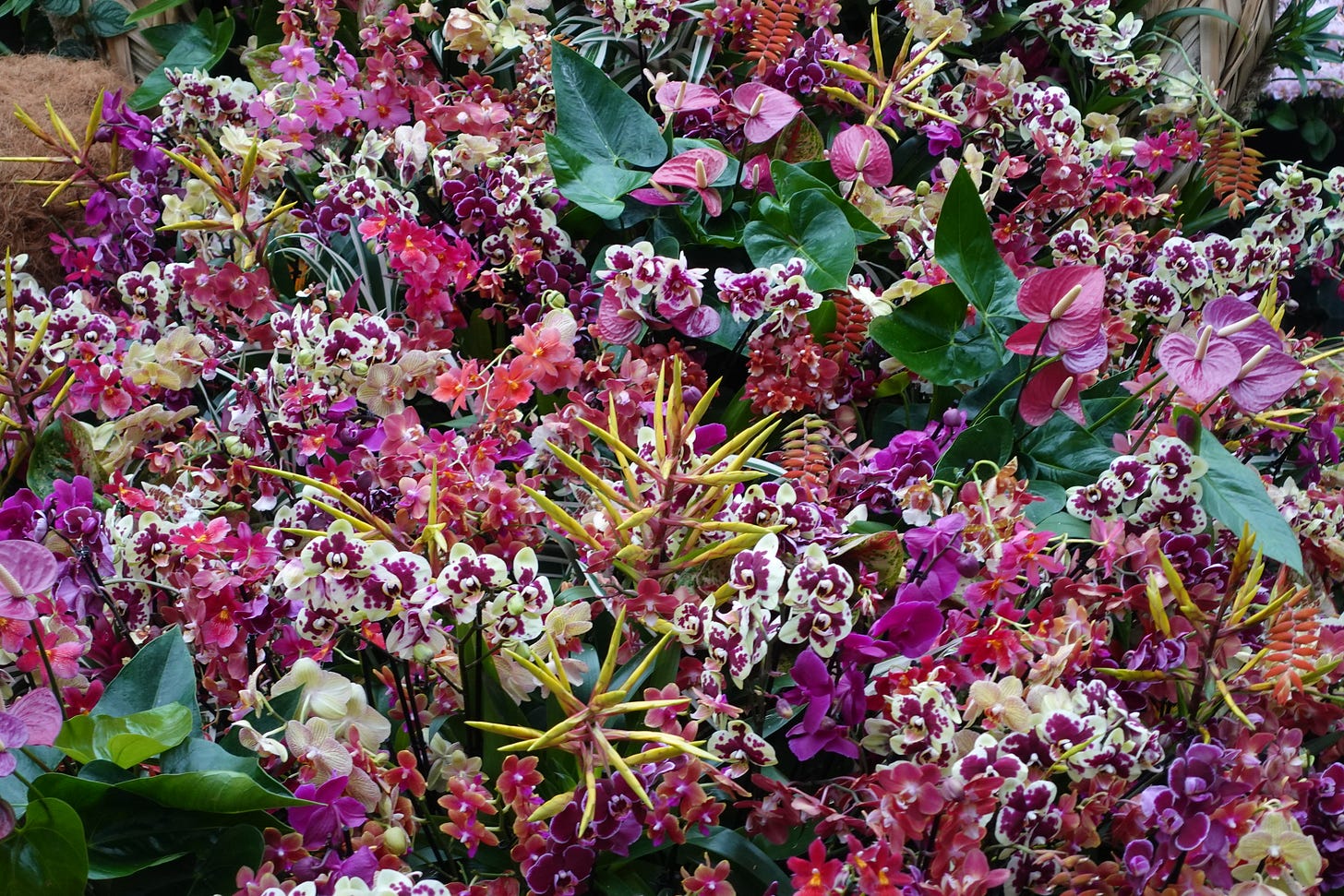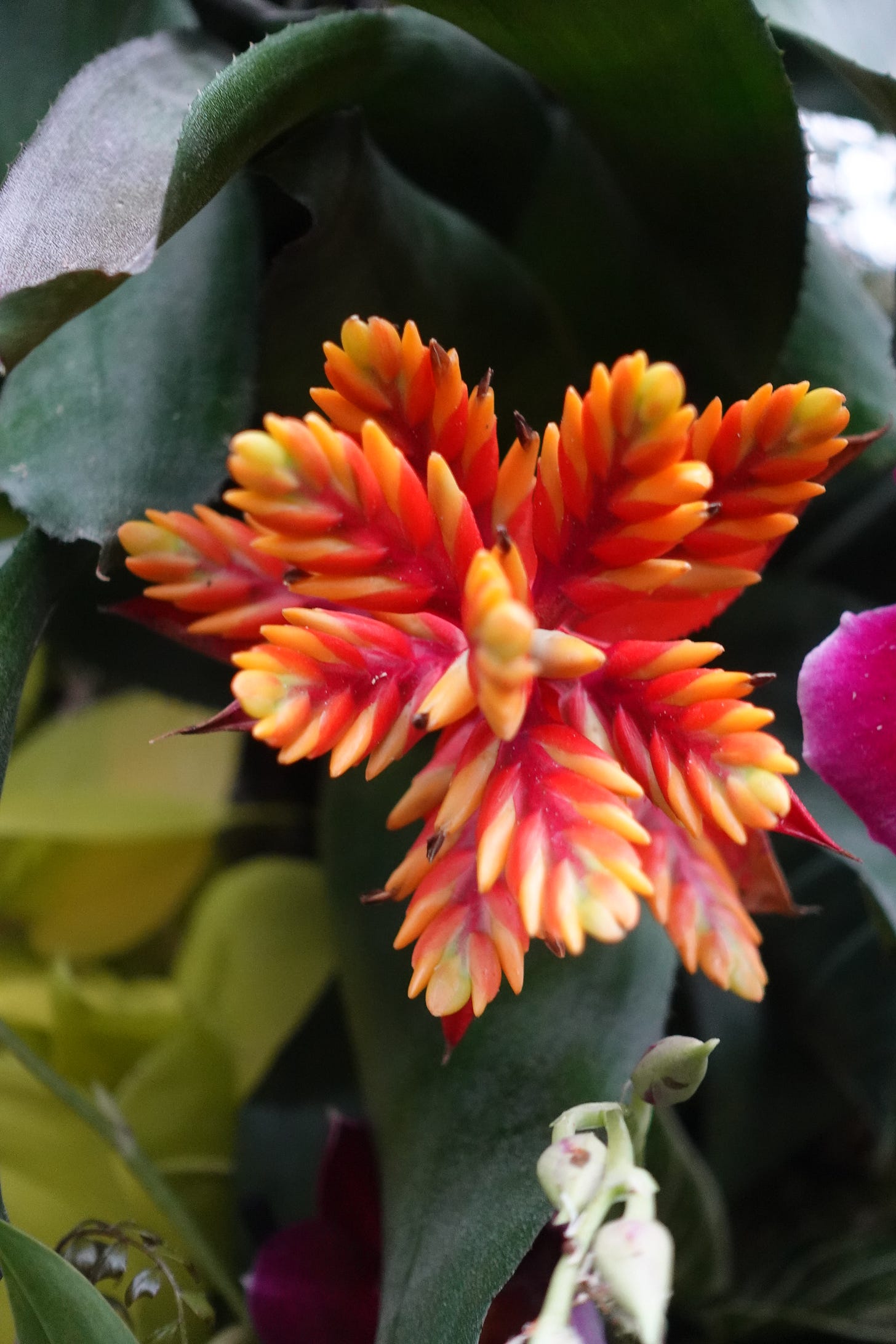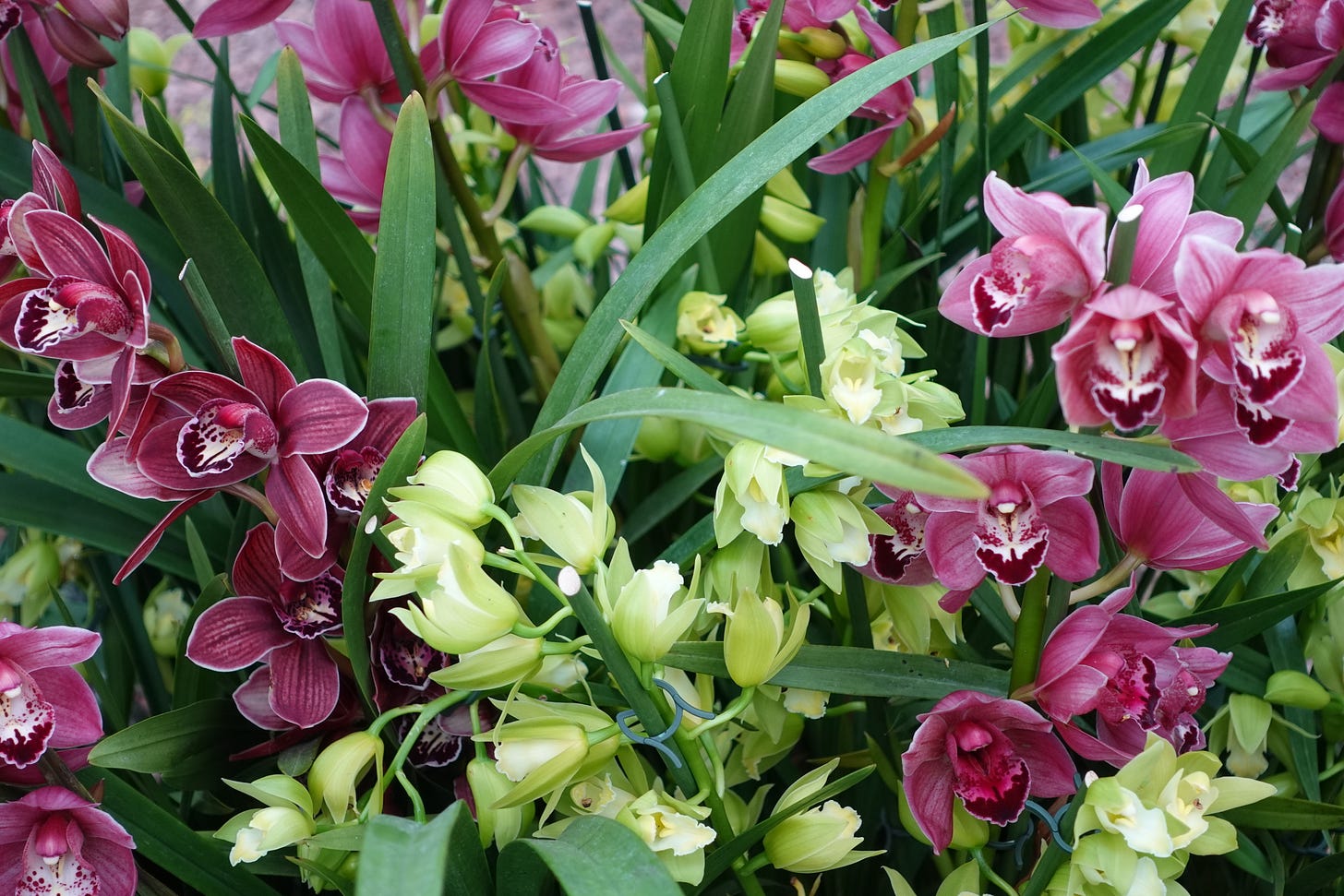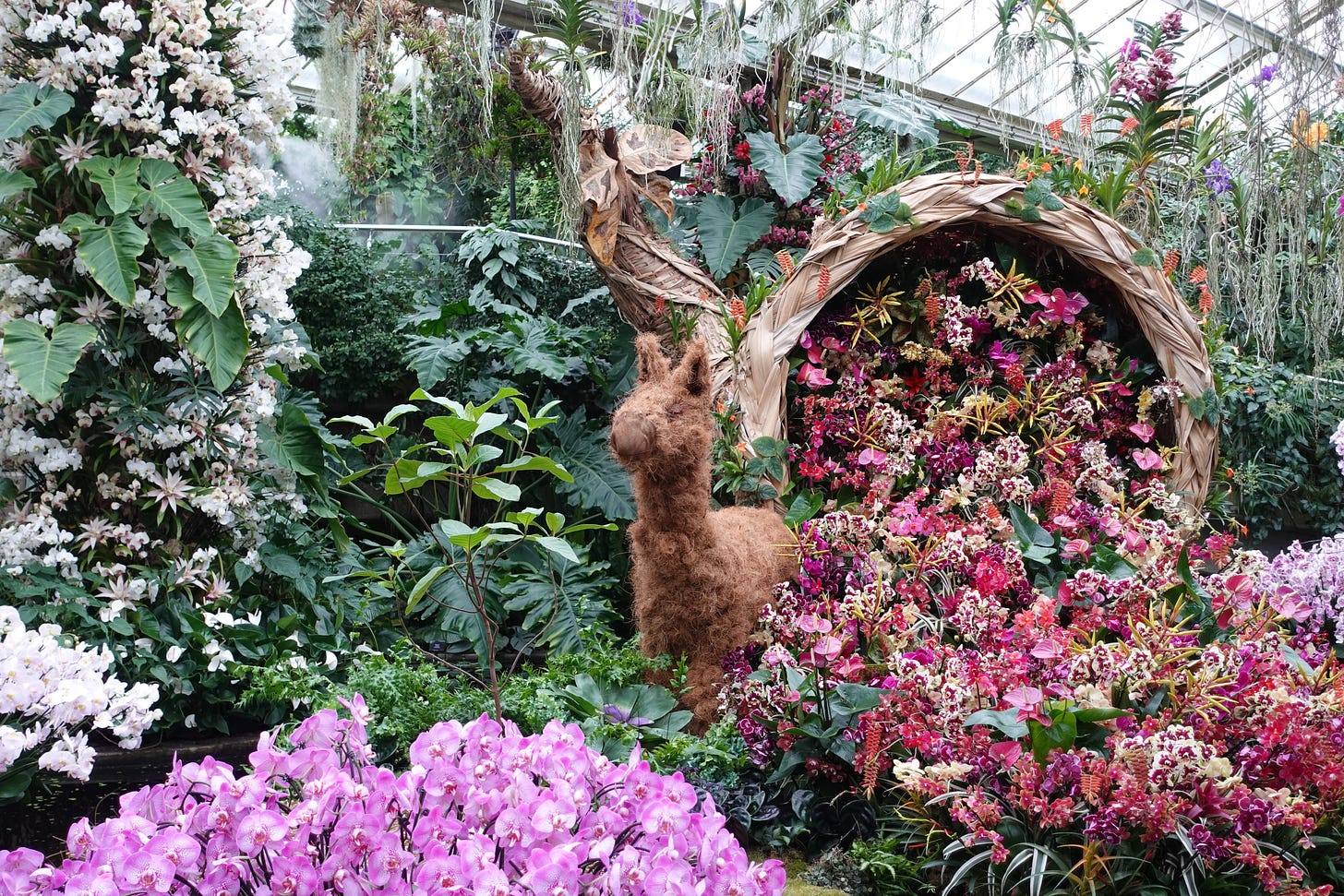I love orchids. There’s something about these exotic flowers that brings immense joy. Their vibrant colours are the perfect antidote to cold, wet winter weather, so I always look forward to the annual Orchid Festival at Kew Gardens in London.
This year's festival has a Peruvian theme, but each festival requires hours of planning and setting out the exhibits. I had no idea orchids grew in Peru, but there are over 3000 species growing there, and it’s estimated that half of those may be unidentified by scientists. Most of the orchids in Peru are grown in the cloud forests around Macchu Picchu.
Met with a blaze of color, the glasshouse at Kew instantly transported me to Peru, one of the world’s most biodiverse countries, with Latin American music, a model vicuna, and pictures of the Nazca Lines. And yet, these flowers are at risk from deforestation and other climatic changes. The vibrant pinks, reds, and oranges filled lakeside area, while purple orchids floated in the water. Above, tiny orchid plants were suspended from the ceiling.
Orchids are very special plants and herbs. However, they are also at the highest risk of decline because of global environmental threats. Orchids are very delicate plants and an indicator of an ecosystem's health; when they disappear, it means trouble for the environment.
There are around 28000 species of orchid worldwide and they require specific conditions to thrive. Orchids partner with fungi to germinate and rely on many pollinators (birds, insects, bees) so the sight of a healthy orchid is a sign of a thriving ecosystem. However, pollination is complex and intriguing when it comes to orchids. Australian naturalist Edith Coleman discovered that a female orchid could change shape to mimic a female wasp, enticing male wasps to pollinate them.
Typically, orchids have three petals and three sepals. Up to four million seeds are found in seed pods- so small they are like dust particles. The seed pods have little nutrients. Instead, orchids create a symbiotic relationship with fungi for nutrients and food matter.
One of the most popular varieties of orchid in Peru is Pink Shoes or Phragmipedium kovachi. It’s also one of the most beautiful and critically endangered.
Walking through the glasshouse filled with orchids was a delight. Behind the scenes, scientists worldwide work to collect and identify species and monitor the health of these delightful plants. Who knew the orchid, because of its delicate nature, lives in a fragile environment filled with multiple challenges?





